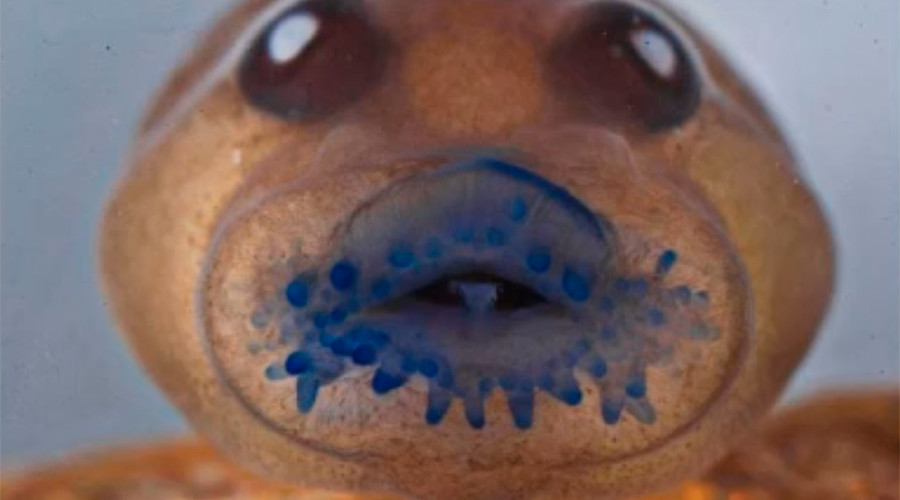Blast from the past: 140 years later, strange tree frog rediscovered in India

Last sighted in 1870, Jerdon’s tree frog was thought to be long gone. But a three-year-old mission beginning in 2007 not only found the amphibian alive and well in India, new research also discovered that it belongs to a completely new genus of tree frog.
Jerdon’s tree frog, also known as Frankixalus jerdonii, has a few unique quirks. The first is how the frog feeds its young. According to National Geographic, a female frog starts the process by laying her fertilized eggs in watery tree hollows. It isn’t until the eggs hatch into tadpoles that things get weird.
Most tadpoles feed on plant material. However, The Verge reported that a female Jerdon’s tree frog will return to her tadpoles and feed her young unfertilized eggs. The biologist who led the expedition, Sathyabhama Das Biju, told National Geographic that “It is very clear that [the tadpoles] are feeding purely on their mother’s eggs.”
Despite not actually seeing a mother frog feed her tadpoles, the female’s reproductive organs are uniquely designed to drop eggs. They contain an unusual, tube-like extension that allows them to lay eggs one at a time. This oddity is paired by an adaptation on the tadpoles’ end, The Verge reported.
Because most tadpoles eat vegetation, they have tiny proto-teeth. However, Jerdon’s tree frog tadpoles have soft mouths that allow them to suck up eggs. NPR reports that studied tadpoles each had “3-19 eggs in their intestine.”
James Hanken, curator of herpetology at Harvard University, told National Geographic that egg feeding care is “very rare among frogs.” Tadpoles are not limited to eating their own mother’s eggs, either. The study also showed that breeding hollows were used my multiple females, implying that it may take a community to feed a child frog.
Another discovery is that the egg-eating frog’s DNA is just as unique as its feeding habits. Previously known as Polypedates jerdonii, new research about the DNA proves that the frog “represents a deep evolutionary split in tree frog evolution,” as Ines Van Bocxlaer told National Geographic. After studying the DNA, feeding habits, and anatomy, the name of the frog was officially changed to Frankixalus jerdonii to reflect its new genus.
Biju, nicknamed “The Frogman of India,” told the BBC that the discovery was “magical.” He explained that “we heard a full musical orchestra coming from the tree tops.” It is the height of these tree tops that allowed the frogs to elude discovery for over 140 years. The BBC reports that the frogs are roughly the size of a golf ball and live up to 6m (19ft) above ground.
However, it is also the tree tops that pose a danger to the frogs. Despite being discovered in a remote region of Darjeeling, India, Biju warned the BBC that the forests they inhabit are being cut down at an alarming rate.
Политика конфиденциальности | Правила пользования сайтом







